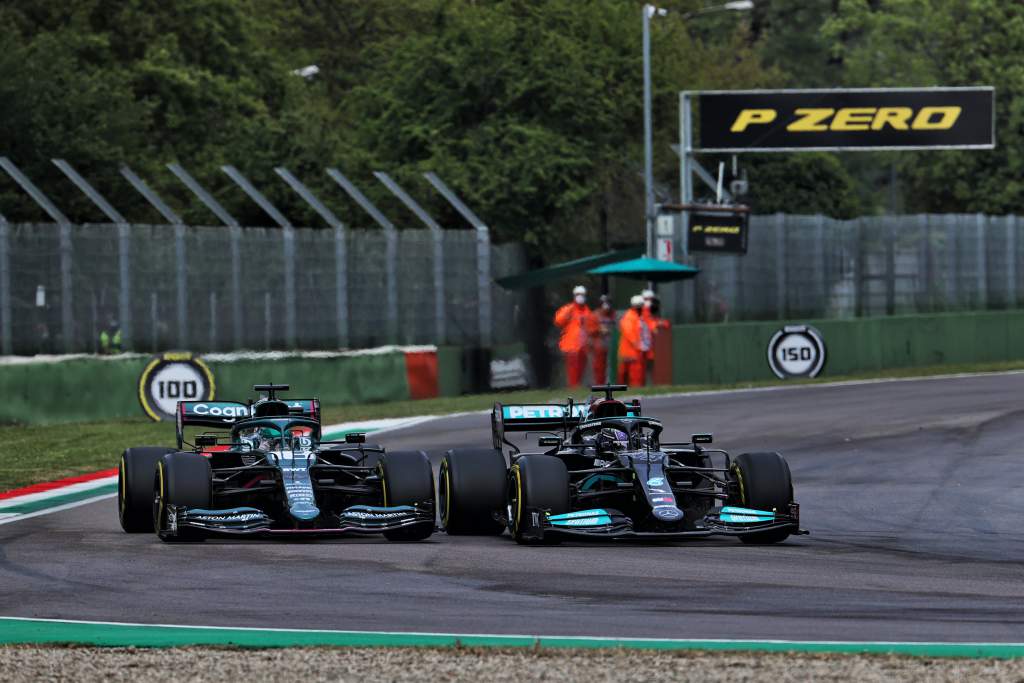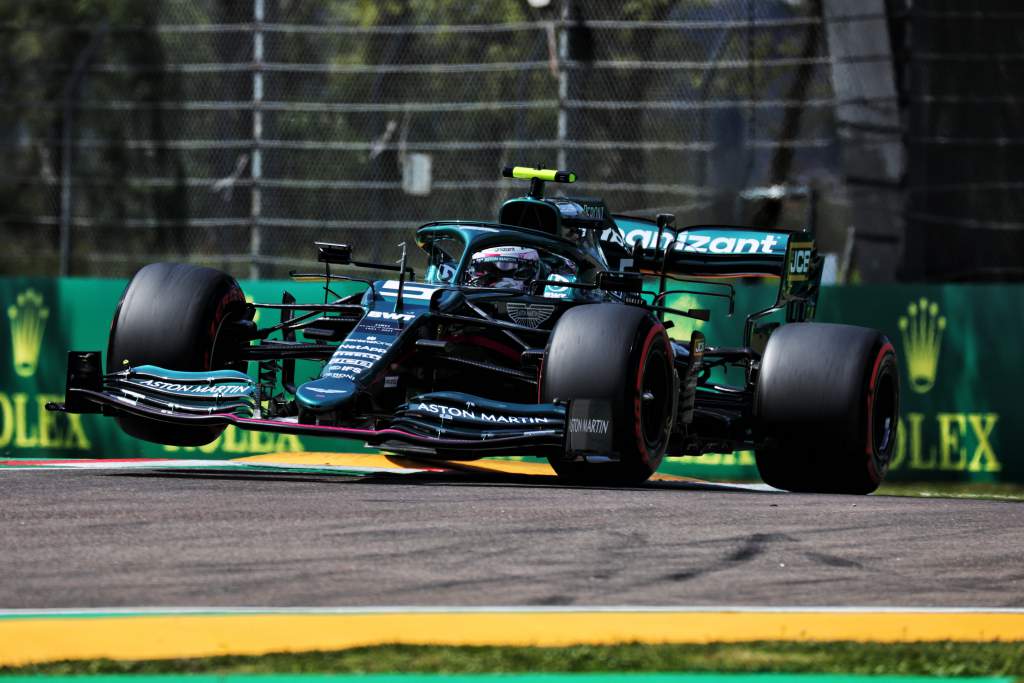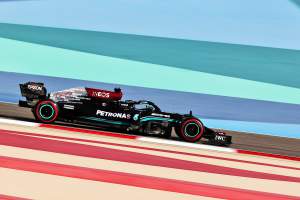Up Next

Aston Martin has been one of the most talked-about Formula 1 teams so far in the 2021 season amid its disappointing performances.
Having had the third-fastest car as Racing Point last season, it’s now having to work hard for minor points finishes.
Where you stand in the competitive order in F1 isn’t only defined by your own performance. Over the winter, everyone does their best to achieve their objectives, but the key unknown is how much progress your rivals will make.
This year has been no exception. Both Mercedes and Aston Martin were positive about having achieved everything they set out to with their 2021 cars, and I’m sure they did. But the first couple of race weekends have shown that you never know where you really stack up against the rest until you hit the track.
It’s still early in the championship, but this is a carryover season with limited development available to teams, so they can’t just spend their way out of problems. You have to make what development you can do count and although we will continue to see variations of performance depending on the circuit, we have already been given a reasonable idea of where everyone stands.
The Imola weekend gave us another set of data to analyse. As usual, I’ve created a performance ranking based on each team’s fastest individual lap of the weekend, converted to a percentage of the outright fastest.
| Team | Performance | Race | |
| 1 | Mercedes | +0.000% | 2nd |
| 2 | Red Bull | +0.047% | 1st |
| 3 | McLaren | +0.413% | 3rd |
| 4 | Ferrari | +0.442% | 4th |
| 5 | AlphaTauri | +0.509% | 5th |
| 6 | Aston Martin | +0.977% | 6th |
| 7 | Alpine | +1.074% | 7th |
| 8 | Williams | +1.142% | DNF |
| 9 | Alfa Romeo | +2.100% | 8th |
| 10 | Haas | +2.510% | 9th |
I have also included a second column showing race-finishing position based on the lead car for each team. I base my performance analysis on the team – not individual driver – performance so we get a position out of 10 based on the race finishing order of all the teams, rather than an individual driver’s position.
This shows how closely the performance correlates to the race order. That’s no surprise, as a quick car is a quick car and the days of keeping your powder dry and qualifying poorly before unleashing a load of pace in the race are long gone.

Imola is just one race in a long year, but because Bahrain was where pre-season testing took place and everyone did plenty of laps and got the most from their packages there, Imola was the first time teams have been in the more normal situation of turning up, making the best from the three practice sessions, then qualifying, racing and going home.
Comparing each team’s fastest lap to what was achieved at Imola last year, we can see who has gained – or in most cases lost – the most. I have ranked these from the most to the least.
| 1 | McLaren | -0.128% |
| 2 | Williams | -0.082% |
| 3 | Alfa Romeo | +0.028% |
| 4 | Aston Martin | +0.102% |
| 5 | Ferrari | +0.166% |
| 6 | AlphaTauri | +0.385% |
| 7 | Red Bull | +0.433% |
| 8 | Haas | +0.473% |
| 9 | Alpine | +0.795% |
| 10 | Mercedes | +1.078% |
Considering the aerodynamic rule changes that have cost downforce, this all looks reasonable for everyone except Mercedes. But we do have to remember this is just one circuit and Aston Martin, Alfa Romeo and Haas performed poorly at Imola last year, whereas Alpine, AlphaTauri and Haas had a decent weekend in 2020. The rest were around their average level for the overall season.
To balance things out a bit, if we compare the average of the whole 2020 season to the average of the first two races of the 2021 season, we get the following. Again, this is ranked in order of most performance gained to least.
| 1 | Williams | -0.974% |
| 2 | AlphaTauri | -0.922% |
| 3 | Ferrari | -0.801% |
| 4 | Alfa Romeo | -0.792% |
| 5 | McLaren | -0.693% |
| 6 | Red Bull | -0.645% |
| 7 | Alpine | -0.346% |
| 8 | Aston Martin | +0.134% |
| 9 | Mercedes | +0.174% |
| 10 | Haas | +0.190% |
If we now realign all of that using Haas as the datum as the team has publicly stated that it has done the minimum possible to its car for 2021 – in other words just made it comply with the new aerodynamic regulations – we get the following.
| 1 | Williams | -1.164% |
| 2 | AlphaTauri | -1.112% |
| 3 | Ferrari | -0.991% |
| 4 | Alfa Romeo | -0.922% |
| 5 | McLaren | -0.883% |
| 6 | Red Bull | -0.835% |
| 7 | Alpine | -0.536% |
| 8 | Aston Martin | +0.056% |
| 9 | Mercedes | +0.016% |
| 10 | Haas | +0.000% |
This means there is very little difference in outcome between the millions spent by Mercedes and Aston Martin over the winter compared to Haas spending the bare minimum. There’s also very little difference in the progress that has been made.
Is this down to high-rake versus low-rake? While it’s impossible to be certain, it is consistent with what we are seeing. What is unquestionable is that it’s a fact that Mercedes and Aston Martin lost ground relative to the others.
Mercedes has made progress since Bahrain and that is what we would expect. However, every circuit has its own characteristics. We have heard a lot about Mercedes suffering from tyre warm-up problems and that could just be the difference between Lewis Hamilton and Valtteri Bottas’s performances, just as it could be the difference between any two driver in the same team.
Having confidence in your car to be able to feel the grip level and push to the limit after one warm-up lap in qualifying has always been something Hamilton has been exceptional at. When you have an inherent car balance problem, that feeling of when the grip is there becomes even more difficult to pick up.
This could be caused by the different rake philosophy of Mercedes versus Red Bull or it could simply be that Mercedes hasn’t learned as much about problems having had seven very successful years. I have always said you learn a lot more from a bad season than you do from a good season.
As for the comments made over the Imola weekend by Aston Martin team principal Otmar Szafnauer regarding the FIA not changing the rules using the proper process, I strongly disagree. Everyone was consulted on the aerodynamic changes and agreed to them.
To cry foul now is in my opinion a weak excuse for not identifying the development direction required to optimise the car for the rule changes. Both Aston Martin and Mercedes were positive enough when they launched their new cars but have now criticised the changes.
Aston Martin has been the most vocal critic and it seems very obvious where that is coming from. I have been involved in a team where management pressure overcomes its technical ability. You can’t just throw more people at it or suddenly change personnel and expect improvements, on most occasions it will actually go the opposite way.

In Aston Martin’s case, suppose it had got some kind of mid-season change in regulations and was given freedom under the homologation regulations to make significant changes, then what? That would take time, the 2022 car project is the main focus and at best you would make a small gain this year.
There has to be a certain amount of patience and long-term planning. I’m sure Lawrence Stroll is very keen to see his team winning more races as soon as possible, but this isn’t the right way to go about it. It’s good to see that Otmar seemed to back down a little from his position after the race, but who knows what is going on behind the scenes.
Formula 1 is a small group. There are 10 teams, the governing body the FIA, and the owner Formula One Group. It’s very important to keep everyone on side. Yes, fight and squabble to your heart’s content behind closed doors but making accusations publicly, especially with any hint you might consider legal action, is out of line and never goes down well. A few have tried, and that few have failed.
I can see this happening at Aston Martin and that would mean instead of a very good team getting time to grow and develop and find its way, I am afraid it risks imploding from management pressure when it really should be on course to get to the front.
Inside the team, everyone starts to doubt themselves when this happens. Making decisions takes longer and getting everyone to buy into those decisions gets more difficult through lack of confidence from everyone, so you find the whole system slows down because everyone is trying not to do anything wrong.

Every decision you make you will learn something from, good or bad is only relative but you need to make those decisions and act on them to keep moving forward. The day you stop doing that you are standing still, and when that happens you go backwards very quickly.
The best thing for the Aston Martin team now is to look at the big picture, focus on getting the most from this year’s car and learning everything it can. If that means finishing sixth or seventh in the constructors’ championship rather than third or fourth, so be it.
You have to get everything right to be successful in F1 and choose which battles to fight. Right now, pressure from the top will only make the team weaker.





